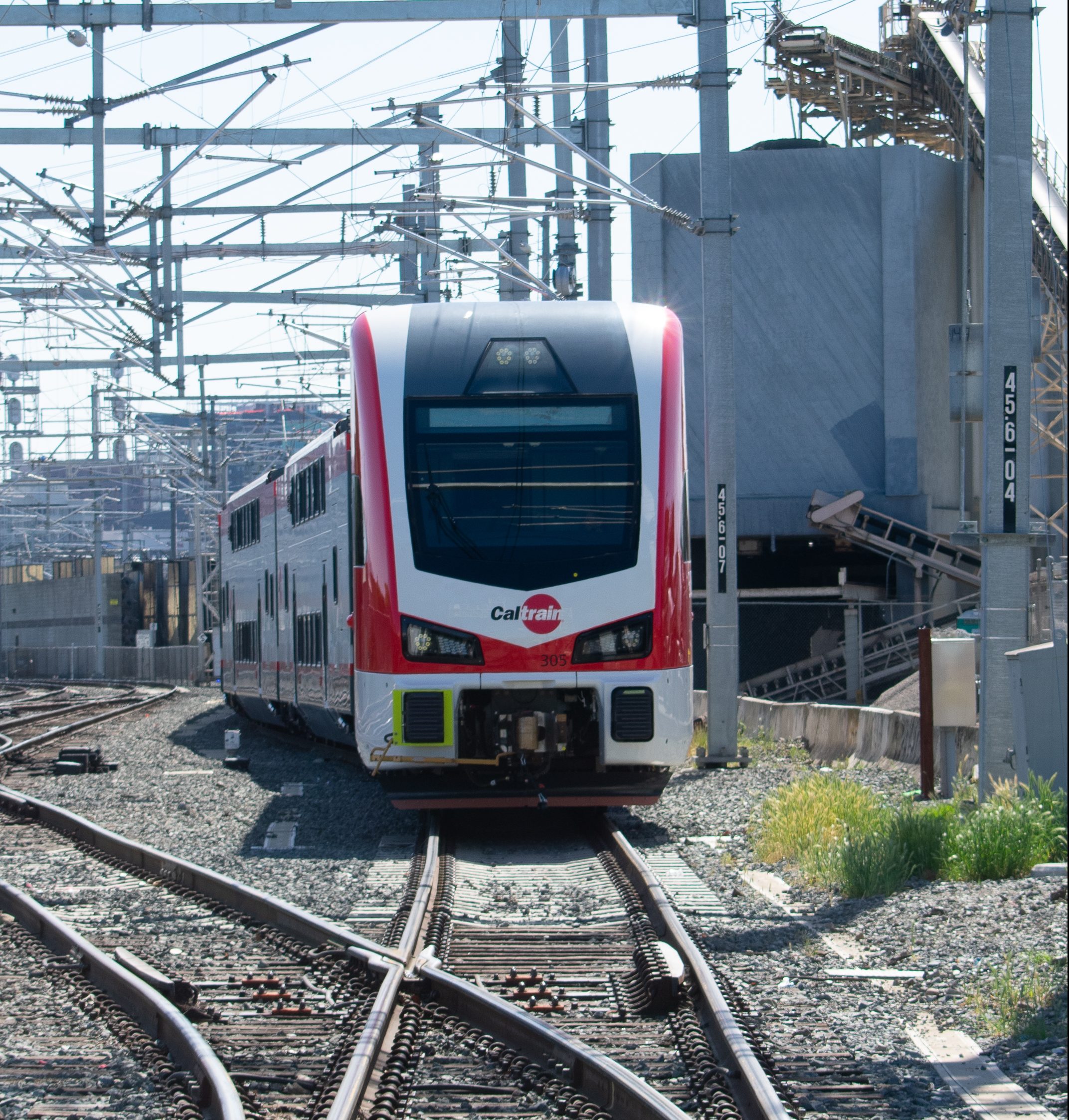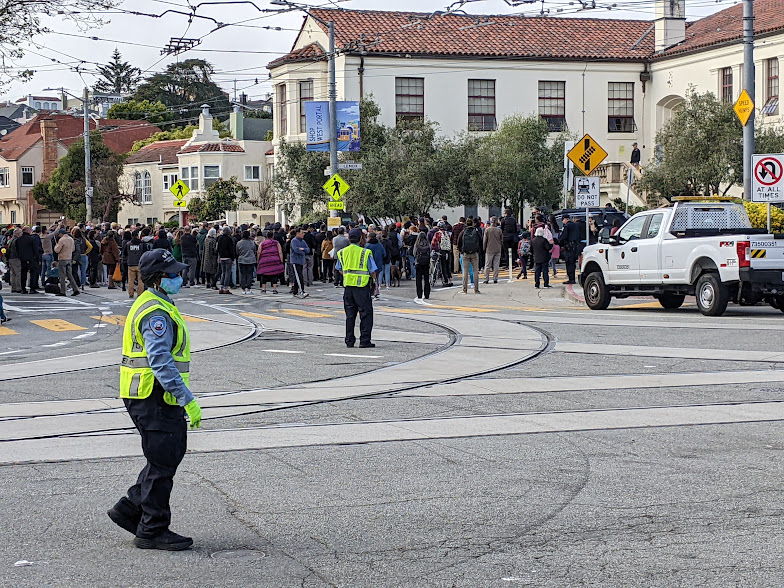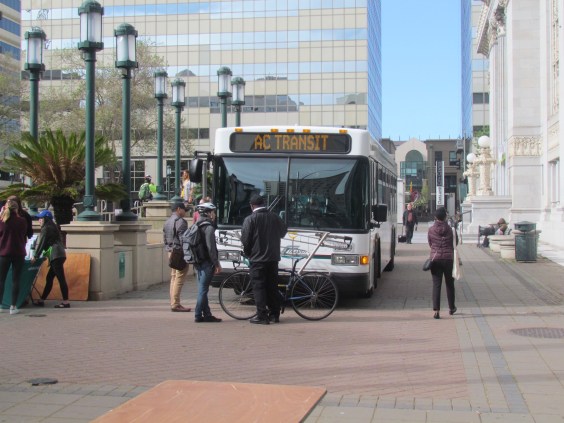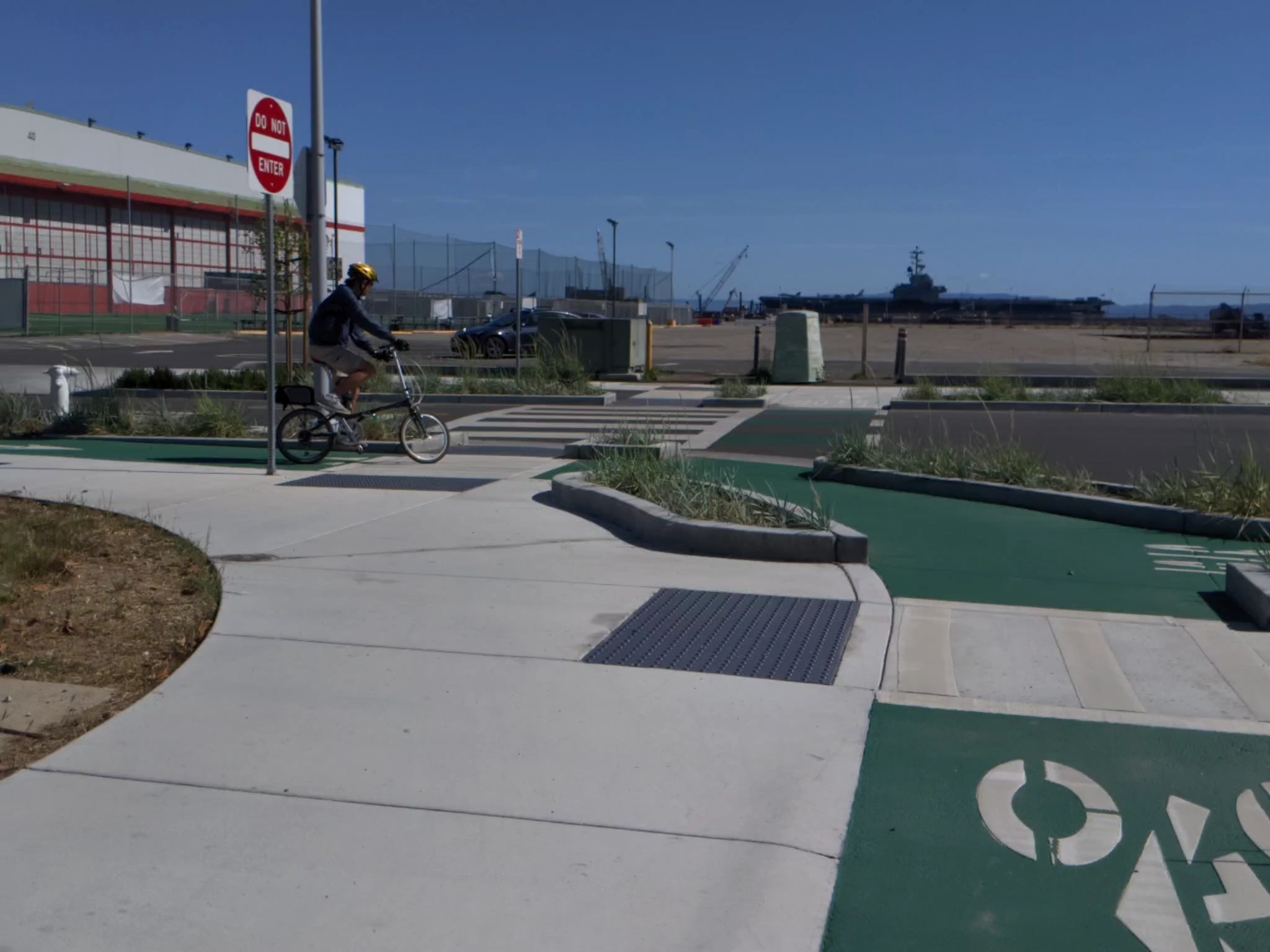Note: GJEL Accident Attorneys regularly sponsors coverage on Streetsblog San Francisco and Streetsblog California. Unless noted in the story, GJEL Accident Attorneys is not consulted for the content or editorial direction of the sponsored content.
Here are a few Streetsblog news nuggets to start your weekend.
Caltrain testing clearances of new equipment
If you ride Caltrain, starting last month you may have noticed a shiny new train set being towed around by an old diesel engine. That's because the commuter operator is checking clearances of the new trains, to make sure they don't bump into platforms or trackside poles. According to a Caltrain release, foam pads are attached to the sides of the train and then it is run:
...along the corridor at five miles per hour, pulled by a diesel locomotive. No major problems arose over the course of testing, and further clearance testing will be conducted throughout the rest of the corridor in the near future.
NEWS: First Caltrain EMU tested along the corridor this weekend. https://t.co/sfjmUDuqcX
— Caltrain (@Caltrain) July 19, 2022
Later this year, the trains will be powered up under sections of Caltrain's overhead catenary as they start the next phase of testing. Electric passenger service is on track to start in 2024.
Tell SFMTA to install the long-promised traffic diverter at Page and Divisadero
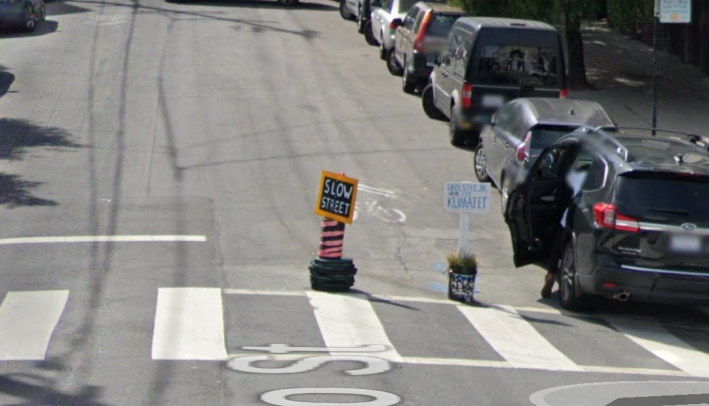
This week Streetsblog reported that Mayor London Breed's office has been working behind the scenes to eliminate the slow streets program, including on Page where she lives. One of the components of the Page Street project is a traffic diverter at Divisadero. There are also proposed diverters at Stanyan and Masonic, but the Divis Diverter is being treated separately, with more public outreach, in what appears to be another tactic to water down the whole project.
The median diverter on Page at Divisadero will be proposed on August 19th. This diverter will increase safety on @PageSlowStreet, help our city take #ClimateAction, and move us closer to #VisionZero ❤️
— Luke Bornheimer (LukeBornheimer@sfba.social) (@LukeBornheimer) August 4, 2022
Submit public comment now (two taps and 10 seconds!): https://t.co/UA0n6KkU7V pic.twitter.com/BUopy43RzD
Advocates are asking people to email their support, with the hope that sufficient political pressure can help save the Page Street Divis diverter and others.
How BART became accessible for the disabled

As part of its 50th anniversary, BART is running a series of articles reminding people of some of the factors and individuals that helped shape its original design. Harold Willson (pictured above) was an advocate in the 1960s who pushed hard to make sure the new system would have elevators and be usable for people in wheelchairs. From the BART story:
Willson’s approach was to “sell” the idea for an accessible BART system by contacting people one by one and having individual conversations with them, slowly winning them over to his cause.
“You could be a pioneer in being the first major public transportation system to be accessible to the handicapped,” Willson told the BART Board and staff as early as 1963, according to Michael Healy’s “BART: The Dramatic History of the Bay Area Rapid Transit System.”
Willson’s methods worked. In 1968, the BART Board requested $7 million from the California legislature to include accessible elevators in its plans.
More money was eventually provided to make BART the first major transit system in the country that has elevators everywhere and is universally wheelchair accessible, all before the Americans with Disabilities Act. Willson died in in 1994 but his legacy carries on. Newer transit systems, such as WMATA in Washington D.C. and MARTA in Atlanta, also made their systems accessible, setting a new precedent for rapid transit.
